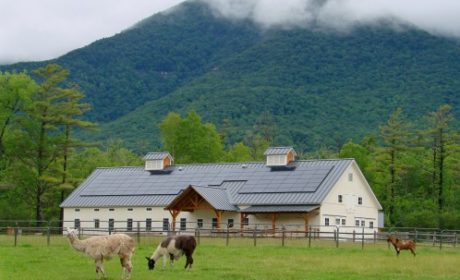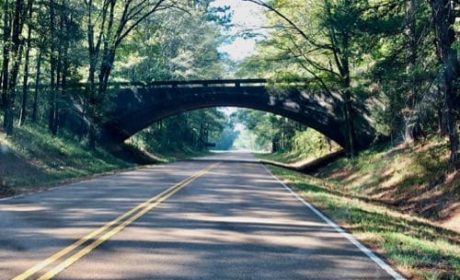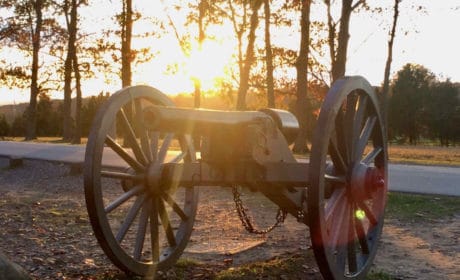If you’re roadtripping in Montana, visit Little Bighorn on an exploration of Big Sky Country. It’s a somber lesson on what happens when two cultures collide.
Teresa Otto shares her experience visiting Little Bighorn Battlefield National Monument. You’ll also appreciate her tips on how to get there.
Table of Contents
How to visit Little Bighorn on a road trip from Billings
I’ve lived in Montana most of my life. So when I discovered a Tomb of an Unknown U.S. Soldier in Garryowen, Montana on a recent road trip, I couldn’t believe my eyes. I’d seen the tombs in Arlington National Cemetery in Virginia and in Pearl Harbor, Hawaii. But one in Garryowen, just 65 miles from my home, who knew?

The road trip started with a visit to Little Bighorn Battlefield National Monument 60 miles southeast of Billings, Montana. The site was called Custer Battlefield or Custer’s Last Stand until 1991 when President H. W. Bush renamed the battleground for its location on the Little Bighorn River.
About the Battle of Little Bighorn
The Little Bighorn Battle started June 25, 1876 in Hunkpapa Village, Chief Sitting Bull’s camp, where Garryowen stands today. As European-Americans began homesteading in the West, and gold was discovered in the Black Hills of South Dakota, conflicts between European settlers and the Great Plains Indians increased.

President Grant’s solution? Relocate the Indians to reservations.
The 7th Cavalry commander, Lieutenant Colonel George A. Custer, didn’t necessarily agree with the plan. But he was a rising military star, having won battles during the Civil War. He had great hopes for promotion and perhaps a career in politics.
He wouldn’t realize either dream.
Custer and about 260 men died during the two-day battle against the Sioux, Cheyenne, and Arapaho warriors. Between 50 and 80 Native American warriors perished in the fight—the exact number is impossible to know, since the Indians removed their dead.

The sheer number of 7th Cavalrymen who died and the handful of soldiers that survived to bury them, meant they were buried hastily in shallow graves. They used the few shovels they had as well as spoons and their bare hands to get the job done.
Proper tombstones for both the 7th Cavalry and Native Americans were placed much later—white marble for the 7th Cavalry soldiers and red marble for the Sioux, Cheyenne, and Arapaho warriors.
Boomer Travel Tip
The Montana Benchmark Road and Recreation Atlas is essential for exploring Montana. Here’s the latest edition.
Monuments at Little Bighorn National Battlefield

A large white obelisk with soldiers’ names and a cluster of white tombstones over a mass grave mark Custer’s last stand. Custer and all his men, including his brothers and a brother-in-law, died on that hill.
The men were outmaneuvered and overwhelmed by the number of warriors they encountered in Chief Sitting Bull’s camp that day. More white and red tombstones tumble over the hillside down to the Little Bighorn River.

Across from Custer’s grave, a memorial to fallen Sioux, Cheyenne, and Arapaho warriors recognizes their sacrifice to preserve the Plains Indians’ nomadic way of life—one that followed game, especially bison. The “Peace thru Unity Indian Memorial” etched with chiefs’ portraits and quotes was built and dedicated in 2003.
A museum on the park’s grounds speaks to the day’s events. During the summer, a ranger conducts talks on the battle—a controversial battle that historians continue to study. In addition to the ranger-led discussions, a local Crow Indian woman, Olivia Rose Williamson, offers enlightening tours of the battlefield from the Native American perspective through her company, Indian Battle Tours.
The entire park covers 760 acres. You can drive to several historic battle sites and overlooks, continuing to explore on foot via walking trails. Although a national veterans’ cemetery lies within the park’s boundaries, this was not to be the final resting place for the tomb of the unknown American soldier.
Tomb of the Unknown Soldier

Road crews discovered the unknown American soldier May 26, 1926 in Garryowen. They uncovered his headless remains in a shallow grave as the preparations for a 50th Anniversary celebration of the battle were underway. Although his identity would never be known, the two eagle buttons in the grave proved he had worn the cavalry uniform.
Why wasn’t the unknown American soldier buried in the National Cemetery? Christopher Kortlander, owner of the Custer Battlefield Museum in Garryowen and the tomb’s caretaker, says the Battlefield’s civilian superintendent and General Godfrey couldn’t agree over who would be in charge of the body. Godfrey had fought alongside this man and wanted a military burial to take place during the anniversary celebration.
With just a month between the unknown soldier’s discovery and the anniversary celebration, there was no time to jump through the bureaucratic hoops to bury him in the National Cemetery. Owners of Garryowen’s general store, Mr. and Mrs. A. G. Carter, donated a plot of land for his tomb.
After a military funeral, the unknown soldier was buried in Garryowen on June 25,1926. A ceremony to bury the hatchet happened at the tomb that day, too, with Chief Red Tomahawk handing General Godfrey the hatchet.
The hatchet, along with newspaper articles, a letter from Custer’s widow, and a jeweled 7th Cavalry sword, were placed in a crypt. Fifty-thousand spectators, as well as veteran Indian warriors in full regalia and Cavalrymen, witnessed the event. Godfrey’s speech promised peace.
A marble slab engraved with “Here Rests In Honored Glory An American Soldier Known But To God” now covers the tomb.
Boomer Travel Tip
Visiting Montana? Start your planning at our Montana Travel Planner page.
Custer Battlefield Museum (now closed)

The Custer Battlefield Museum (now permanently closed), steps away from the Tomb of the Unknown American Soldier, is a private not-for-profit museum. You are greeted by a photo of the burying the hatchet ceremony along with a list of the 19 items placed in the crypt. A video on the battle brings the sites you’ve seen at Little Bighorn Battlefield to life.
For Christopher Kortlander, preserving history, sharing the battle’s story from both sides, and honoring the unknown U.S. soldier is a passion. He has collected both Cavalry and Indian artifacts for his museum.
Custer’s beaded leather gauntlets, removed from his body before burial, are in one case. Tom Custer’s pistol in another.
The world’s largest collection of photographs on display by David F. Barry, with pictures of Custer and Sitting Bull, line an entire wall. And Chief Sitting Bull’s only known signature is here, too, on a contract agreeing to join Buffalo Bill’s Wild West show.
Asking Christopher about his favorite item in the museum, he grew quiet for a moment. Then he ticked off the things I’ve just mentioned plus one more—“Sitting Bull’s death mask. It’s precious. It’s the most sacred.”
Crow Fair’s Pow-Wow

Visiting both places is an easy day trip from Billings and gives you a historical perspective on the consequences of European-Americans’ westward expansion. Planning your trip to coincide with Crow Fair, usually held in mid-August, offers an added bonus.
Great Plains tribes gather at Crow Fair for a daily parade, rodeo, and pow-wow. With 1500 teepees on site, pow-wow dancers wearing eagle-feather headdresses, ribboned shawls, beaded moccasins, and elk-teeth dresses twirl, spin, dip, and keep time to the drum’s beat. It is a feast for the senses.
Little Bighorn road trip tips
Little Bighorn Battlefield National Monument is at exit 510 off Interstate 90. Hours vary by season, with spring and fall hours 8 am to 6 pm and summer hours 8 am to 8 pm. Admission is free to National Park Pass holders or $25 per car.
Custer Battlefield Museum (closed) is at exit 514 off Interstate 90. Hours are from 9 am to 5 pm in spring and fall and 8 am to 5 pm in the summer. Admission is $7.50 for adults.
Crow Fair is at exit 509 off Interstate 90. Starting time varies by day. Admission is $20 per car.
Custer Battlefield Trading Post at exit 510 off Interstate 90 is both a restaurant and gift shop. It is known for its Indian tacos and has an extensive collection of artwork, beadwork, and beaded cradleboards for sale.
The Lariat Motel is a clean, affordable, family-run vintage motel in Hardin, Montana.
If you use Billings as home base, the Northern Hotel is a good choice. The award-winning Burger Dive, upscale Walkers, and several microbreweries are close by.
Bighorn Canyon National Recreation Area makes another fun day trip from Billings.




